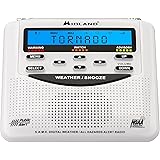
Last Updated | October 17, 2023
Welcome to The Folio3 Guide to Shopify app development guide, where we’ll walk you through the process of developing Shopify apps with ease.
Whether you’re just starting your journey or looking to enhance your existing knowledge, this comprehensive Shopify app development guide will provide you with valuable insights into the world of Shopify app development.
So, what’s the wait? Let’s diver straight in…
Introduction to Shopify App Development
Shopify app development involves creating custom applications to extend the functionality of Shopify’s e-commerce platform. These apps can range from simple add-ons to complex solutions, catering to various business needs.
Shopify’s popularity as an e-commerce platform has soared over the years, and with it, the demand for tailor-made apps has also increased. Whether you’re an aspiring developer or a business owner looking to build a custom app, understanding the fundamentals of Shopify Plus Development is the first step in your journey.
Transform your vision into reality with our expert Shopify design services. Get your free quote today!
Shopify apps can be a game-changer for businesses. They add functionality and features that enhance the customer experience and streamline operations. By creating a custom app, you can tailor your e-commerce business to meet specific needs, which can give you a competitive edge.
Read Also Shopify Hydrogen Apps
Getting Started with Shopify App Development
Starting any journey begins with proper preparation. Developing a Shopify app is no different. Here’s how to get started:
- Define Your App’s Purpose: Clearly define the purpose of your app. What problem will it solve? What value will it add to Shopify store owners or customers? Knowing your app’s purpose is the first step to success.
- Learn Shopify’s Ecosystem: Familiarize yourself with Shopify’s ecosystem, including their APIs, app guidelines, and other Shopify App Development services with best practices. This knowledge will be invaluable as you start coding.
- Choose the Right Technology: Decide on the technology stack for your app. Shopify uses primarily Ruby on Rails and Node.js. Your choice should align with your app’s requirements.
- Plan Your App’s Design: Sketch out the app’s design and user interface. A well-designed app is more likely to succeed and attract users.
- Set a Budget and Timeline: Determine the budget and timeline for your project. This step is vital for managing your resources effectively.
- Assemble Your Team: If you’re not a developer yourself, assemble a skilled development team. Ensure that your team understands the intricacies of Shopify app development.
Remember that a well-structured preparation phase sets the stage for a smoother Shopify development company. It’s worth investing time in defining your objectives and planning your approach.
Read Also Shopify Development Roadmap
Navigating the Dynamic World of the Shopify App Ecosystem
The Shopify App Ecosystem is a thriving marketplace that plays a pivotal role in the success of businesses using the Shopify platform. It’s not just a marketplace; it’s a vibrant and dynamic community where Shopify developers, entrepreneurs, and e-commerce enthusiasts come together to shape the future of online retail.
What Makes the Shopify App Ecosystem So Exciting?
- Abundant User Base: The sheer number of Shopify merchants and their growing customer base make it a fertile ground for app developers. With millions of potential users, your app can quickly gain traction.
- Monetization Opportunities: The ecosystem offers diverse monetization models, including one-time purchases, subscription models, and revenue-sharing arrangements, allowing you to choose what works best for your app.
- Robust Support and Resources: Shopify provides extensive documentation, active developer forums, and responsive support teams. This support network ensures you have the resources needed to overcome challenges and achieve success.
- Continuous Growth: Shopify is constantly evolving, adding new features and functionalities. As a developer, you can ride this wave of innovation by creating apps that leverage these new capabilities. Your app can evolve and stay competitive over time.
Read Also Develop An e-commerce app On Shopify
Benefits of the Shopify App Ecosystem:
The Shopify App Ecosystem is a dynamic and thriving marketplace where innovation meets opportunity. For developers, businesses, and entrepreneurs, understanding the manifold benefits of this ecosystem is crucial to making the most of it. Let’s dive deep into why the Shopify App Ecosystem is an essential part of the e-commerce world.
- Diverse Business Models: Shopify’s user base includes a wide variety of businesses, from traditional retail stores to subscription-based services and dropshipping ventures. Your app can cater to this diverse clientele.
- User-Friendly Interfaces: Shopify store owners and their customers appreciate user-friendly interfaces. Ensure your app integrates seamlessly with the platform, providing an intuitive experience.
- Integration Potential: Offering integration with other popular e-commerce tools is a powerful value proposition. Connect with payment gateways, email marketing platforms, and inventory management systems to enhance your app’s appeal.
- Mobile Responsiveness: Given the surge in mobile commerce, it’s crucial that your app functions impeccably on both desktop and mobile devices. A responsive design is a must.
- Scalability: Designed for the long haul, your app should scale with the growing needs of businesses. Scalability ensures that your app remains relevant and valuable as businesses expand.
Optimizing Shopify App Performance – Best Ways
This table format makes it easier to grasp the various optimization techniques for Shopify app development.
| Optimization Technique | Description |
|---|---|
| Reduce HTTP Requests | Minimize the number of HTTP requests your app makes to external servers. |
| Optimize Images | Compress and optimize images to reduce file sizes. |
| Lazy Loading | Implement lazy loading for images and non-essential resources. |
| Content Delivery Network (CDN) | Use a CDN for geographically distributed content delivery. |
| Minimize JavaScript | Minimize and compress JavaScript files. |
| CSS Minification | Minify CSS to reduce file size. |
| Browser Caching | Set cache headers for assets to enable browser caching. |
| Database Optimization | Optimize database queries with indexes and eliminate redundancies. |
| Use Content Delivery APIs | Utilize Shopify’s Content Delivery APIs for efficient content retrieval. |
| Limit API Requests | Reduce API requests by batching and using GraphQL efficiently. |
| Asynchronous Operations | Perform background and non-blocking operations for a smooth user experience. |
| Optimize App Code | Regularly review and optimize your app’s code by removing redundancy and bottlenecks. |
| Use a Content Delivery System (CMS) | Serve static content efficiently, reducing server load. |
| Load Critical Content First | Prioritize loading critical content above the fold for quick user access. |
| Mobile Responsiveness | Optimize your app for mobile devices by resizing images, CSS, and JavaScript. |
| Server Scalability | Prepare for server scalability with load balancing and auto-scaling. |
| Performance Monitoring | Implement performance monitoring tools for real-time issue identification. |
| Content Caching | Use server-side caching for dynamic content to speed up server responses. |
| Regular Testing | Continuously test your app’s performance in development and production environments. |
| Optimize for Mobile-First | Design your app with a mobile-first approach to ensure fast load times on smaller screens. |
Why Choose Folio3 for Shopify App Development?
Folio3 has a unique approach to Shopify app development services, setting us apart from the rest.
Folio3 has a proven track record in Shopify app development, and our approach is what makes us stand out. Here’s why you should choose Folio3:
- Expertise: Our team comprises experienced developers who understand the nuances of Shopify. We’ve successfully built a wide range of apps for various industries.
- Custom Solutions: We don’t believe in one-size-fits-all solutions. We create custom apps that precisely address your business needs.
- Full-Cycle Development: From concept to launch and ongoing support, we provide end-to-end development services, ensuring a seamless experience for our clients.
- Quality Assurance: We have a rigorous quality assurance process to ensure your app is bug-free and functions flawlessly.
- Post-Launch Support: Our commitment doesn’t end with the launch. We offer continuous support, updates, and improvements to keep your app competitive.
Our unique approach to Shopify app development ensures your app is not just functional but excels in performance and user experience.
Read Also Shopify App Blocks
Creating Your Shopify App
Now, let’s get down to the nitty-gritty of actually creating your Shopify app. Here’s a step-by-step guide to help you navigate through it:
1. Conceptualization and Planning:
- Define Your App’s Purpose: Start by clearly defining what your app aims to achieve. What problem will it solve for Shopify store owners, and what unique value will it add?
- Target Audience: Identify your target audience and their specific needs.
- Market Research: Conduct market research to assess the demand and competition in your app’s niche.
2. Set Up Your Development Environment:
- Get a Shopify Development Store: Create a Shopify development store to test and debug your app in a safe environment.
- Choose a Technology Stack: Select the programming languages and frameworks that best suit your app’s requirements.
3. Design and User Interface:
- Sketch Your App’s Design: Visualize your app’s layout and user interface to ensure an intuitive and appealing user experience.
- Create Mockups and Wireframes: Design mockups and wireframes to fine-tune the app’s visual elements.
Read Also Mobile App Builder for Shopify
4. Development and Coding:
- Write Clean Code: Develop your app using clean, well-structured code to ensure efficiency and maintainability.
- Utilize Shopify APIs: Leverage Shopify’s APIs and other Shopify App Development Best Practices to ensure your app seamlessly integrates with the platform.
5. Testing and Quality Assurance:
- Thorough Testing: Rigorously test your app to identify and fix bugs, ensuring a flawless user experience.
- Beta Testing: Involve beta testers to gather real-world feedback and make necessary improvements.
6. Submission for Review:
- Prepare for Submission: Ensure your app complies with Shopify’s guidelines and documentation.
- Submit to the App Store: Submit your app for review on the Shopify App Store.
7. Launch and Marketing:
- Launch Your App: Once approved, launch your app on the Shopify App Store.
- Develop a Marketing Strategy: Create a marketing plan that includes online advertising, content marketing, email campaigns, and social media promotion.
8. Post-Launch Support and Updates:
- Continuous Improvements: Keep your app updated with the latest Shopify API changes and customer feedback.
- Customer Support: Offer responsive customer support to address user inquiries and issues.
Adding Functionality and Features
The success of your Shopify app heavily depends on the features and functionality it offers. Here’s how to enhance your app’s functionality:
- User-Friendly Interface: Ensure that your app has an intuitive and user-friendly interface. The easier it is to use; the more likely users will embrace it.
- Automation: Implement automation features that save time and effort for store owners. For example, offer automated order processing or inventory management.
- Personalization: Allow users to customize the app to their specific needs. Personalization creates a more personalized and engaging experience.
- Integration: Ensure that your app integrates seamlessly with other popular e-commerce tools, like payment gateways and marketing platforms.
- Scalability: Design your app to scale with the growth of the business. Scalable apps can accommodate increasing data and user loads.
- Performance Optimization: Continuously monitor and optimize your app’s performance. Faster-loading apps lead to better user satisfaction.
Remember, the goal is to create an app that makes the lives of Shopify store owners easier and more profitable.
Read Also Hire Someone To Build a Shopify Store In The USA
Optimizing Your App for Performance
Optimizing your app’s performance is critical for success. Here are some best practices to ensure peak performance:
- Minimize Load Times: Reduce loading times to provide a snappy user experience. Compress images, use content delivery networks (CDNs), and optimize code.
- Efficient Code: Write efficient code that doesn’t waste system resources. Regularly review and refactor your code to improve performance.
- Database Optimization: Optimize your database queries and indexing for faster data retrieval.
- Regular Updates: Keep your app up to date with the latest Shopify API changes and best practices.
- Scalability: Ensure your app can handle increased traffic without performance degradation.
- Monitoring and Analytics: Implement performance monitoring and analytics tools to identify and resolve issues proactively.
Remember, a well-optimized app not only pleases users but also contributes to higher user retention and word-of-mouth recommendations.
Ensuring App Security and Compliance
Security is paramount when developing Shopify apps. Store owners and customers entrust you with their data and transactions, so you must ensure the highest level of security. Here are some best practices:
- Data Encryption: Use encryption to protect data during transmission and storage. Implement HTTPS and ensure sensitive data is properly encrypted.
- Authentication and Authorization: Implement robust authentication and authorization mechanisms. Only authorized users should have access to sensitive areas and data.
- Regular Audits and Penetration Testing: Periodically audit your app for vulnerabilities and conduct penetration testing to identify and fix security weaknesses.
- Compliance with Regulations: Ensure your app complies with applicable regulations, such as GDPR or CCPA, depending on your user base.
- User Education: Educate your users about security best practices. Encourage them to use strong passwords and enable two-factor authentication.
App security is an ongoing effort, and staying vigilant is key to protecting user data and maintaining trust.
Read Also Shopify Theme App Extension Setup Guide
App Marketing and Promotion
Creating a fantastic Shopify app is only part of the equation. You must also ensure it reaches your target audience. Here’s how to promote your app effectively:
- App Store Optimization: Optimize your app’s listing on the Shopify App Store. Use relevant keywords, compelling descriptions, and eye-catching visuals.
- Content Marketing: Create blog posts, videos, and other content that showcase the benefits of your app. Share this content on your website and social media.
- Influencer Marketing: Partner with influencers in the e-commerce industry to promote your app.
- Email Marketing: Use email campaigns to reach out to potential users and keep existing users engaged with updates and offers.
- Referral Programs: Encourage satisfied users to refer others to your app in exchange for rewards or discounts.
Remember that successful marketing is an ongoing effort, and it’s important to track the performance of your marketing channels to make data-driven improvements.
Conclusion – Shopify App Development Guide
Well, to sum up, our Shopify app development guide, Shopify app development opens the door to endless possibilities, and with the right knowledge, dedication, and guidance, creating a Shopify app can be an exciting and rewarding journey.
At Folio3, stands ready to support you every step of the way in your Shopify app development journey. We are committed to helping businesses like yours connect with the Shopify community, crafting tailored solutions that make a real impact. With Folio3, you can experience a seamless and successful Shopify app development journey.
Your Shopify migration is a click away. Embrace the future of e-commerce with us and watch your business soar. Start Now!
FAQs – Shopify App Development Guide
What are the key benefits of developing a Shopify app for my e-commerce business?
Developing a Shopify app can significantly enhance your e-commerce business by adding custom functionality, streamlining operations, and improving the customer experience. It allows you to cater to specific business needs, gain access to a vast user base, and choose from diverse monetization models.
How do I choose the right technology stack for my Shopify app?
Selecting the right technology stack for your Shopify app depends on your app’s specific requirements. Consider factors like the programming languages, frameworks, and tools that align with your app’s functionality and performance goals.
What’s the importance of scalability in Shopify app development?
Scalability is vital because it ensures that your app can handle increasing data and user loads as businesses grow. A scalable app remains efficient, reliable, and valuable to users, even as their needs evolve.
How can I ensure the security of my Shopify app and user data?
To secure your Shopify app, implement data encryption, robust authentication and authorization mechanisms, and regularly conduct security audits and penetration testing. Compliance with relevant regulations is also crucial in protecting user data.
What role does marketing play in the success of a Shopify app?
Marketing is essential for promoting your Shopify app and reaching your target audience. It involves optimizing your app’s listing in the Shopify App Store, creating content to showcase its benefits, and using channels like email marketing, influencer marketing, and referral programs to attract users and drive adoption.
Source: https://ecommerce.folio3.com/blog/shopify-app-development-guide/






